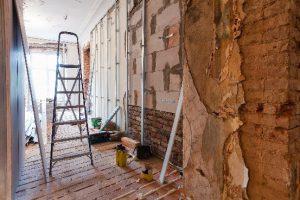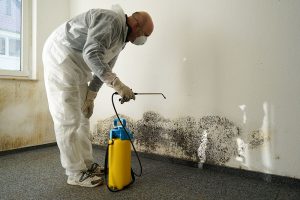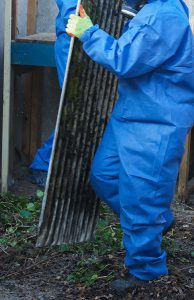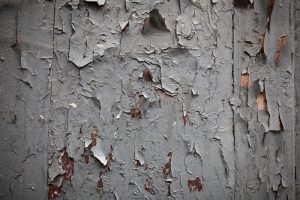Renovation 101
Posted on by
3 environmental health hazards to consider when you “do it yourself”
You’ve probably seen this familiar home improvement storyline on TV: Homeowners are excited about knocking down walls and transforming their property into the home of their dreams when (wait for it), they run into an environmental complication that requires expert remediation.
Although many homeowners take on remodeling projects to save money, they can be costly and potentially dangerous. So before you grab the sledgehammer, learn about environmental issues in older homes and safe remediation practices.
Mold
What causes mold growth? Mold grows in warm and humid conditions where there are leaks in walls and roofs or around fixtures.

How can it affect my health? Some people are sensitive to molds, and suffer symptoms like a stuffy nose, wheezing, and red or itchy eyes or skin. Others, such as those with allergies to molds or asthma, may have more intense reactions, which can be dangerous.
How can I protect my family from mold exposure? Whenever you find mold growth in buildings, remediate damaged materials as soon as possible and repair the structure. To remediate mold growth,
- Remove mold from materials that can be effectively cleaned
- Discard materials that cannot be cleaned, or are damaged beyond use, and replace them.
- Always identify the source of water that caused the mold and correct any leaks to keep the mold from coming back. Maintain proper control of humidity in your home.
- Protect occupants (especially children) and workers from contaminants during remediation.
For more information, see Molds in the Environment
Asbestos
What is asbestos? Asbestos is a mineral made up of fibers and is found in soil and rock. In the past, asbestos was mined and used in the United States to make building products like insulation, fireproofing and acoustic materials, wallboard, floor tiles, roofing shingles, etc.

In the United States, mining asbestos has ended, and many uses have been banned, beginning in the 1970s. However, asbestos is still present in old building materials and still used in some building products, such as roofing or insulation.
How can asbestos harm my health? You can be exposed to asbestos during renovation or demolition projects by breathing in the fibers released into the air. Frequent exposure to asbestos over time has been shown to cause lung disease.
How can I protect my family from asbestos exposure?
- Avoid disturbing any materials that you think might contain asbestos, including pipe and furnace insulation, siding, flooring, vermiculite attic insulation, and popcorn ceilings installed from the 1950s to the 1970s.
- If the materials are breaking down or need replacing, talk to your state environmental agency or a certified asbestos contractor who knows and follows laws for safe removal and disposal to avoid contaminating the rest of the home or the environment.
For more information, see Asbestos Exposure and Reducing Exposure
Lead
What is lead? Lead is a bluish-gray metal that naturally occurs in the ground in small amounts and can enter groundwater. Lead was banned from house paint in 1978, but the available product was sold until depleted. Therefore, all houses built before 1978 are likely to contain some lead-based paint, and possibly houses built shortly after 1978 as well. Deteriorating lead paint and lead contaminated dust are the most harmful sources of lead exposure for children.

How can lead harm my health? There is no safe level of lead in blood, and the effects of lead exposure cannot be corrected. Children are especially vulnerable, including unborn children. Studies have shown that even low levels of lead can affect a child’s IQ, attention span, and academic achievement. If you are renovating a home built before 1978, be especially aware of lead hazards in paint or lead piping.
How can I protect my family from lead exposure?
- Talk to your health department about testing for lead in paint and dust in your home.
- Hire a professional certified lead abatement service.
- Keep children out of older housing and away from peeling paint or chewable painted surfaces.
- Clean and isolate all sources of lead until remediation is completed.
For more information, see A Healthy Home for Everyone
Check for these other environmental health hazards in your home:
Carbon monoxide
Carbon monoxide (CO) is an odorless, colorless gas that kills without warning. Gas stoves, gas- and oil-burning furnaces, portable generators, idling vehicles, and charcoal grills produce CO.
To keep your family safe from CO exposure:
- Install CO detectors near every sleeping area, and check them regularly.
- Have your furnace inspected every year.
- Use generators only outside more than 20 feet away from your home, doors, and windows—never in your house or garage.
Radon
Radon is estimated to be the second leading cause of lung cancer in the United States.
It is a radioactive gas that forms when uranium and radium break down in rocks, soil, and groundwater. Radon can enter the air in your home through cracks and gaps in the foundation or structure.
Because you cannot see, smell, or taste radon, you must test your home.
- Radon testing is simple and inexpensive, and many state radon programs offer free radon test kits.
- You can also fix or prevent radon exposure in homes.
Tweet this: “Home renovation 101. Three environmental health hazards to consider when you ‘do it yourself.’ Learn what they are and how you can protect your family at https://bit.ly/2ZdQWLG #CDCEHblog via @CDCEnvironment”


Post a Comment